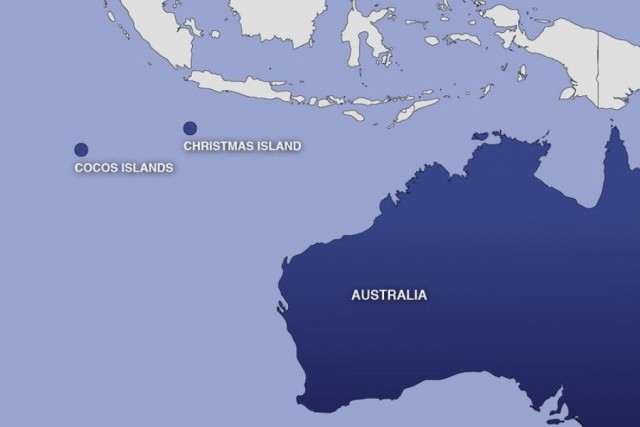Cocos Islands
THE COCOS (or Keeling) Islands are a dependency of AUSTRALIA located in the INDIAN OCEAN, about 1,675 mi (2,700 km) northwest of Perth, and 620 mi (1,000 km) southwest of JAVA, INDONESIA. Unlike the volcanic peak of their closest neighbor, CHRISTMAS ISLAND, 560 mi (900 km) to the northeast, the Cocos Islands consist of two flat coral atolls, roughly 15.5 mi (25 km) apart. The islands were long owned privately but are today a holiday resort for Australians attracted to its beaches and abundant wildlife.
The two atolls are the tops of the Cocos Rise, a volcanic ridge rising 5,000 ft (1,500 m) from the ocean floor. Reefs started forming here only about 1,800 years ago, and today form a lagoon around the main atoll (South Keeling), covering 43 square mi (110 square km), with over 32 mi (52 km) of reef enclosing 26 small islets. The largest of these are West Island (Pulo Panjang), South Island (Pulo Atlas), Home Island, Direction Island, and Horsburgh Island (Pulo Luar). The smaller atoll is composed of only one island, North Keeling, which is only 1.2 mi (2 km) long and about 1,320 ft (400 m) wide. This atoll is entirely covered by the Pulu Keeling National Park, an important breeding ground for seabirds like the red-footed booby and for green turtles. It is the only island in the Indian Ocean free from natural predators (snakes, weasels, dogs, etc.), and is thus protected as a unique natural habitat. The park, created by the Australian government in 1995, also includes the reef up to .9 mi (1.5 km) around the atoll, known for its 99 species of coral and endless mollusks, crustaceans, and tropical fish.

The islands' two names have both been used since the 17th century. The name Cocos appears on mariners' charts at the same time as the sighting in 1609 by Captain William Keeling. The first settlement wasn't built until 1826, when officials of the East India Company brought Malays from SUMATRA and Java to grow cereals, vegetables, and coconuts (for oil and copra) to supply the company's ships. The chief administrator was John Clunies-Ross, and although Great Britain formally annexed the islands in 1857, Queen Victoria granted full rights over the islands to the family of Clunies-Ross in 1886. Sovereignty was transferred to Australia in 1955, but the “kingdom” of the Clunies-Ross family was not finally bought out by the Australian government until 1978 (for 6.25 million Australian dollars) and transferred to the local Cocos Island Council (made up mostly of Malays).
The Cocos islanders then voted to become part of Australia in 1984, giving them citizenship and access to social services. The Cocos Malays are a unique group, cut off from their culture for eight generations, yet remaining strongly attached to their Islamic faith and traditions. Most of them live on Home Island, whereas most Australian government workers reside on West Island. There are no industries, except a small coconut crop, so the island suffers from high unemployment. Tourism is small, though there are plans to open a large resort.